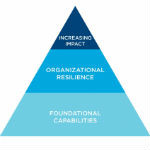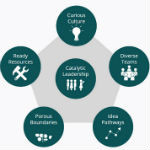2017 was a year of political polarization and boundary-pushing, of devastating natural disasters, and of social movements that struck a nerve and shined a light on harassment and abuses of power.
Many of our most popular articles this year addressed the need to find better ways for social sector players to work together in the face of such challenges and opportunities—to design more effective programs, create impactful funding strategies, and build capacity to sustain those innovations for the long haul.

1. Stop Raising Awareness Already
Too many organizations concentrate on raising awareness about an issue without knowing how to translate that awareness into action by getting people to change their behavior or act on their beliefs. University of Florida’s Ann Christiano and Annie Neimand argue that it’s time for activists and organizations to adopt a more strategic approach to public interest communications.

2. Time to Reboot Grantmaking
Social sector organizations need a “healthy diet” of funding to achieve maximum impact. But what exactly does that look like? Michael Etzel, a partner at Bridgespan, and Hilary Pennington, vice president for education, creativity, and free expression at the Ford Foundation, explain how to put this concept, as captured by a “Grantmaking Pyramid,” to use as a tool to reshape the funding conversation.

Are you enjoying this article? Read more like this, plus SSIR's full archive of content, when you subscribe.
3. The New Science of Designing for Humans
The days of privileging creativity over science in design thinking are over, writes Piyush Tantia, co-executive director of the social enterprise ideas42. He outlines a methodology called behavioral design, which harnesses the rise of behavioral science and impact evaluation to create new ways of engineering programs and human interactions based on what really works.

4. Solving the World’s Biggest Problems: Better Philanthropy Through Systems Change
A growing number of philanthropists and nonprofits are embracing the principles of systems change as an effective way to solve the world’s biggest problems. Jeffrey Walker, the chairman of the venture philanthropy fund New Profit, highlights five fundamental elements of successful collaborations.

5. Creating Breakout Innovation
Joanna Levitt Cea and Jess Rimington, visiting scholars at the Stanford Global Projects Center, examine the growing trend of nonprofits, community groups, and philanthropists embracing co-creation to tackle problems while pointing out that few of these efforts are resulting in bold innovation and powerful solutions. Here, the authors present five collaborative practices that can help organizations step beyond business as usual and meet their criteria for “breakout innovation.”

6. Is Your Nonprofit Built for Sustained Innovation?
In a survey of nonprofit leaders conducted earlier this year, a majority said their organizations did not have the capacity to continuously innovate. The authors of this piece—Nidhi Sahni and Laura Lanzerotti, partners at the Bridgespan Group; Daniel Pike, a case team leader at Bridgespan; and Rockefeller Foundation Associate Director Amira Bliss—offer six starting points for nonprofits that want to build their capacity to sustain innovation.

7. Marginalized Returns
Impact investing has been seduced by a false narrative of combining social impact with financial gains. Authors Mara Bolis, senior advisor in the Private Sector Department at Oxfam, and Chris West, cofounder of Sumerian Foundation, argue that the prevailing view on impact investing—where social impact and financial returns are the norm, not the exception—is unrealistic.

8. Development Malpractice In Ghana
Mulago Foundation Director Kevin Starr offers some straight talk on ill-conceived development projects, pushing back on the mantra that failure is good. He shares the story of one Ghanaian village’s water interventions as an unfortunate illustration of development pitfalls while presenting some of the basic principles that should guide such work.

9. Systems Change in a Polarized Country
In this turbulent political moment, US foundations are increasingly working to make progress through “systems change,” writes Mark Kramer, co-founder and managing director of FSG, and the author of SSIR’s most popular article of all time, Collective Impact.

10. Spotting the Patterns: 2017 Trends in Design Thinking
Creative leaders and innovators are approaching design thinking in more mature ways, writes Andy Hagerman, co-founder and managing partner of The Design Gym. Moving away from a sole emphasis on language and learning, they are increasingly focusing on questions of application, ownership, and impact.
Support SSIR’s coverage of cross-sector solutions to global challenges.
Help us further the reach of innovative ideas. Donate today.
Read more stories by Eden Stiffman.

